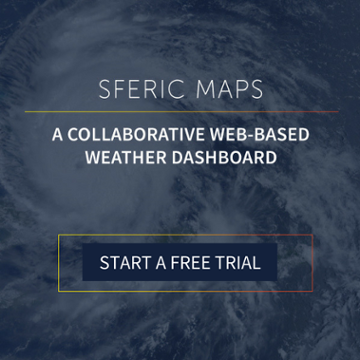Weather Data and Insurance: 4 Ways Weather Data Helps
- Jan 31, 2018
Weather data and insurance companies are a great match because severe weather and insurance don’t get along. In 2017, weather-related incidents cost the industry over $95b. That’s why weather data is so important. It helps insurance companies mitigate their overall risk and drive that number down.
We know that in insurance, context is everything. You can add a lot more context to your operations by incorporating weather data into a number of different areas. Let’s take a look at the four biggest ways weather data helps insurance companies maintain great relationships with their clients and manage claims.
Reduce Claims

Our first and most important reason why weather data and insurance are a great mix is for claim reduction. When insurers use a combination of alerts and real-time weather data monitoring, they can anticipate claims. This anticipation is key in preparing policyholders for specific dangerous weather conditions while also monitoring those storms in real-time.
Real-time weather monitoring also helps insurers anticipate where adjusters are most necessary. For example, when a hurricane is set to hit Florida, having weather data helps insurance companies prepare adjusters from other areas of the country to make the trip down and meet the high demand. With weather data, insurers can take steps to reduce claims before and after a weather event strikes.
Alerts For Customers
Increase customer engagement with weather alerts. Alerts for different forms of severe weather will help your policyholders prepare properly. Specific alerts for lightning, hail, flooding, and winter weather are a just a few examples of severe weather conditions Sferic Maps monitors. By sharing these alerts with policyholders, you give them a personal touch other insurance companies can’t compete with. This shows that you really care about them and want them to be safe during severe weather incidents.
You can also reach out to policyholders who have been recently affected by weather events. This is the perfect time to reaffirm your commitment to them and ensure they are important to you. After a damaging severe weather event, policyholders need support. Being there for them is essential in maintaining a positive relationship with them for years to come. While weather data alerts aren’t necessarily helpful after storms create damage, you can let policyholders know they exist for future severe weather events. This will help improve overall customer engagement.
Risk Management

The next reason why weather data and insurance companies are a great fit is risk management. We think weather has two primary applications to risk management. Firstly, weather data enables insurance companies to evaluate claims data in context. Using historical weather data is key in flagging suspicious weather-related claims. For example, if there is a claim of damage due to a lightning strikes, insurance companies can use our lightning data to pinpoint the exact location, strength, and type of lightning strikes to see if it matches up. Secondly, weather helps insurers accurately predict claims reserves allocations before a major weather event.
Telematics

The last reason why weather data and insurance make sense together is in the context of telematics. Weather data provides critical insights to insurers who monitor driving behavior and set pricing. It adds an additional context that is key in understand events. Think about it. If you see that a driver is driving the legal speed limit you would probably assume they were driving safely. But what if there was a blizzard outside? Or fresh rain ripe for hydroplaning? That’s where weather data steps in and helps.
Earth Networks Insurance Solutions
If you’d like to explore the possibilities of weather data and insurance companies a bit more, we’ve got you covered. Take a look at all of the different tools we have to offer. Between real-time weather visualization, an API, and mobile alerts we’re able to cover insurance companies of all shapes and sizes. Don’t forget to sign up for your free trial of Sferic Maps, too!







